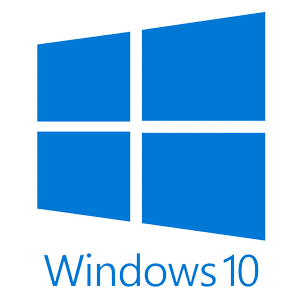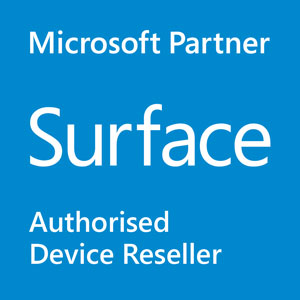How it all began…
The idea of OneNote spawned in late 2000 in an email exchange between Steven Sinofsky and Chris Pratley. Steven Sinofsky is the guy that became infamous for Windows 8. But he was the Senior VP in charge of Office at the time. Chris Pratley was new to the role of Group Program Manager for Word.
In Chris Pratley’s words:
“We were talking about how there wasn’t much in the way of software to deal with information that was not yet a document.
I thought more about how to dramatically make work easier or better for lazy unstructured people like me, as well as organized people like outliners and users of filing cabinets, and the idea came to me of a tool that would let me manage the tremendous amount of stuff that people tell me in meetings or on the phone, or that I read, or just think of on my own. Most of this ends up being junk anyway, but a lot of it is really valuable, and so much is lost since the only tools I have are my memory (failing) and paper, which I lose pretty quickly. (In fact, I recently cleaned out my office and found four separate paper notebooks with three pages of notes in each. That was all I had got to before losing each one.)
The key insight I had at this point was that whatever this tool was, it had to let you capture the thought or piece of info as you had it without forcing you to deal with any software goo up front. To take a note in Outlook you had to find the place where you were allowed to take notes. But if it was a phone number, you were supposed to use Contacts, but you had to create a contact and name it before you could save the phone number. Post-its beat that hands down. This new tool, which I called “Scribbler” would be as close to electronic paper as we could get to make capturing information easy, but then have much more power than paper to help you deal with the stuff you put into it.”
OneNote genesis
OneNote Announced at COMDEX 2002
Bill Gates announced OneNote at Comdex in 2002. Comdex stands for ‘The Computer Dealers Conference’. It was something akin to the modern day CES conference. It ran from 1997 to 2003. Like CES, it was a big get together for geeks and nerds to show off the latest and greatest tech devices.
It’s hard to imagine that in 2002 YouTube simply didn’t exist. Neither did Google. But I could find no footage of Bill Gates speech at Comdex in 2002. I only found recorded Comdex footage of that year featuring a “new” camera. Someone had taken the time to digitize it and put it onto YouTube.
It appears that the big news of the show was a four-megapixel digital camera that had a wireless modem. So, you could email photographs that you just taken to yourself. It’s hard to imagine how mind-blowing this was back in 2002. The digital camera in question was around about the size of a loaf of bread. And it weighed several kilos.
Released as “Microsoft Office OneNote 2003”
In all this scintillating tech news was OneNote. And a year later, the software shipped as Microsoft Office OneNote 2003.
Based on the philosophy of quick and easy note capture, OneNote had automatic saving. Remember that in 2002, computers still had floppy disk drives. So this was radical! Look at this note from the Guide Book – yes, it even came with a manual.
Automatic Save
Paper has no need for a “save” button. Once you write something down, it’s there. OneNote offers the same kind of convenience. There is no save button in OneNote. Everything is automatically saved as you write it. So if it’s necessary to turn off the computer or close the program quickly, you don’t need to worry about losing important information. In addition, you never have to decide where to save a particular note.
OneNote 2003 Product Guide
Other handy features of this version included automatic handwriting recognition, audio and video recording, a screen shot tool, the infinite canvas and source links on content that you copy and paste from websites.
OneNote 2003 officially launched in November 2003, but I can only assume that it started shipping earlier than that with new Tablet PCs, because I have notes from August 2003. It’s hard to remember what was going on 20 years ago, but at least the notes tell me something!
Office 2007 Professional
Down the road a few years OneNote 2007 began to ship with Office 2007 Professional. Way before Office 365, Office 2007 Professional was the version of Office that you would get at work. Office 2007 Home did not come with OneNote. So if you wanted it at home, you had to buy it or buy a Tablet PC. Many people got it at work. But those that opened it, usually did so by mistake and quickly closed it again. They had no idea what it was, or why they should use it. And for far more people than you’d believe, that remains the case today. Most have not used this digital note taking software, and still don’t know what it is.
OneNote 2010
In 2010, Offie included OneNote 2010 for the first time. So if you bought a PC back in 2010, you usually bought it with a copy of Office, and for sure you got OneNote with it. Same with Office 2013 and 2016. And across those versions, you won’t find too many radical changes to the software. There were updates to the ribbon menu across these Office versions. Also, Outlook integration was added. And SharePoint storage options were expanded to include OneDrive (and SkyDrive as it was known).
Steven Sinofsky Leaves Microsoft
It was around the 2010 to 2013 that Steven Sinofsky was building a reputation outside of Microsoft circles. Sinofsky is a brilliant tech mind and highly organized manager who liked to hold the reigns tightly. He’s a big part of the reason that former Google employee Manu Cornet drew the Microsoft Org Chart the way he did in a famous meme.
Sinofsky took the fall for the mess that was Windows 8 and left the company late in 2012. He allegedly had the personality similar to that of other well-known Steve’s (Ballmer, Jobs). Despite that, he should be remembered for leading far more than Windows 8. He led the team that brought us Windows 7, and he was one of the key drivers behind OneNote and Surface.
Windows 8 Launch
October 2012 was the launch date for Windows 8. I’m not going to get into the problems with Windows 8 and the jarring Metro User Interface that came with it. It was Windows 8 that pushed the Surface into the market – as a spectacular failure at first. But it also opened a chapter for OneNote that we now know as OneNote for Windows 10.
You see, a key part of the proposition of OneNote was, and still is: Better than real paper. And to deliver on that, OneNote needed to up the game, and go beyond the constraints of Office. OneNote needed to be faster, lighter and more touch friendly.
Surface Pro 3 OneNote Integration
In 2014, Microsoft launched the Surface Pro 3, and with it – in the box – came the new Surface Pen – complete with Purple OneNote Button. The idea was that you would pick up your Surface, click this button and OneNote would launch. You’d have a blank page to jot notes on without even signing into your computer.
This kind of tight integration with Windows would have been difficult under the Office banner. So to deliver an ink and touch first experience while pushing the envelope, the OneNote Team committed to building an app on the new Metro User Interface that came with Windows 8. It was a basic, touch friendly version of OneNote called OneNote MX, bundled in with Windows 8 and available from the Windows Store. It included a funky radial “puck” menu, like the one that you can still get in Drawboard PDF today. This version of OneNote was cloud first, and cloud only. This meant you could only store notebooks in Microsoft’s SkyDrive cloud storage. We now know it as OneDrive.
The OneNote Desktop version that we’d known and loved was still available as part of Office, and as a free download on Onenote.com. But there were now two OneNote(s) on Windows… Oh the irony!
OneNote Arrives on the Web
Through this same period, OneNote expanded to become much more than an app on Windows. In 2010, it arrived on the Web at OneNote.com.
And in 2011 it was the first Office app to launch on iOS. Soon after, in 2012 OneNote arrived on Android. And in 2014 OneNote showed up for the first time on Mac. Also in 2014, OneNote appeared in your browser as the OneNote web clipper extension.
By 2015, we saw Microsoft folks demonstrating the new OneNote Universal Windows Platform app running on Windows 10 Phone. Devices like the Lumia 950 could be plugged into a dock, with a screen, keyboard and mouse which operated like a full Windows PC. And the same OneNote code would automatically scale up to the full screen – giving an experience just like using a PC. That was really the vision of Universal Windows Apps (UWP). A world that we still don’t seem to be close to realizing yet. Could your Phone replace your PC altogether?
OneNote for Windows 10
Under Windows 10 in 2015, we saw UWP come to life. The same code, flexing to different form factors. It had a lot to offer. Hence the team invested heavily in the UWP platform. Eventually, this led to the decision to halt development on the Desktop version in around 2016. The UWP version was now called ‘OneNote for Windows 10’. By 2018, OneNote were ready to announce their intentions to the world with a blog post. The Desktop app (then known as OneNote 2016) would officially no longer be updated. And all the development efforts going forward would be put into OneNote for Windows 10. In fact, by this stage, OneNote 2016 had been dormant for years, seeing only very minor tweaks and bug fixes.
For the first time since 2003, OneNote did not ship as a part of Microsoft Office 2019. Rather, OneNote for Windows 10. We covered this at the time with a video that encouraged you to get use to this change. It was happening whether we liked it or not! I personally switched over to OneNote for Windows 10, and I still use it to this day.
My Experience with the Redmond Team
I personally visited the team in Redmond around this time. We presented our experience working with corporate customers in Australia. As much as we loved OneNote for Windows 10, the move to this cloud only app was problematic for many reasons. The conversation we had with the team was truly humbling. The folks there are passionate about the idea of notes in all forms, and they are the smartest minds that I’ve encountered in the field. Of course, my voice was just a drop in the bucket. But they still took the time to listen and discuss the issues with me. But listening to customers is not always the right thing to do. Sometimes innovation demands that we deliver customers something that they didn’t know they needed yet.
New Life is Breathed into OneNote Desktop
By 2019, Microsoft had reversed their previous decision to cease development on the Desktop app. The vision for UWPs did not pan out and so they set about breathing life into what we still knew as OneNote 2016. The goal to merge the two apps together was set. Now in 2021, OneNote have officially announced their intention to end the tale of two OneNotes and bring everything back to the desktop app. We’ve released a video discussing that announcement.
The Future of OneNote
The good news is that by 2025 there will be just one OneNote on Windows. And it will have all the features that we love from both sides of the coin. OneNote continues to be an important application in the Microsoft world. Fluid Framework included it in their recent demonstrations. Fluid will allow you to work with data in its best format across all of Office.
If you’re new to this software, or you’re not sure what to do with it, then you’re in the right place. On September the 1st, we released a training video series on YouTube. There will be two playlists walking you through both OneNote for Windows 10 and OneNote Desktop. So subscribe to the channel and hit that notification bell.






